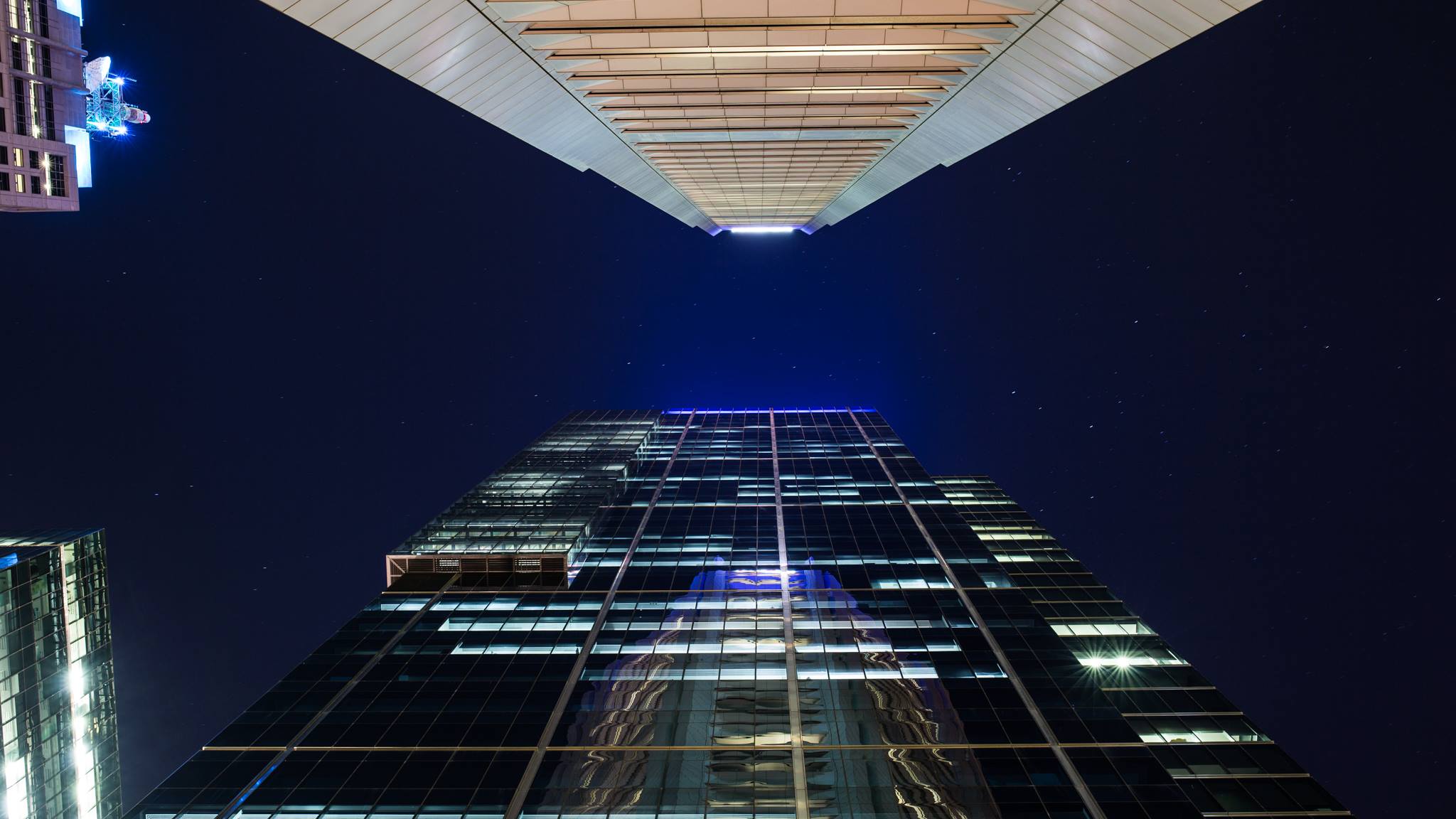Night Architecture! Architecture at night… after the sun’s gone, before the sun’s up?
I’ve run off a few pointers for you below the image, they’re going to help with the architecture side of things and then, just do it at night – It doesn’t need to be in a city, find something appealing about your house at night. A detail or a well lit tile – see how you go.
Remember to tag your post with #dpsweeklychallenge and #dpsnightarchitecture so we can see / find your images on the internet!

What constitutes ‘architecture photography’
Architecture photography is a specialized genre of photography that focuses on capturing the design, aesthetics, and functionality of buildings and other structures. Here are the key elements that constitute architecture photography:
1. Subject Matter
- Buildings and Structures: This includes residential buildings, commercial properties, public buildings, monuments, and bridges.
- Details: Architectural elements such as doors, windows, staircases, and other design details.
- Interior and Exterior: Both the inside and outside of buildings are important, showcasing different aspects of the architecture.
2. Composition
- Angles and Perspectives: Unique angles and perspectives highlight the design and scale of the architecture. Shooting from high or low angles, or straight-on, can dramatically affect the presentation.
- Lines and Shapes: Emphasizing the geometric forms, lines, and curves present in the architecture.
- Symmetry and Asymmetry: Using symmetry to create a sense of balance or asymmetry for a more dynamic composition.
- Framing: Utilizing natural or architectural elements to frame the subject.
3. Lighting
- Natural Light: The quality, direction, and intensity of natural light play a crucial role. Morning and evening light (the golden hour) often provide soft, warm tones.
- Artificial Light: Interior lighting, streetlights, and other artificial sources can create interesting effects, especially in night photography.
- Shadows and Highlights: Using shadows to add depth and contrast, highlighting textures and details.
4. Technical Considerations
- Lens Choice: Wide-angle lenses are commonly used to capture the full scope of a structure, while tilt-shift lenses help correct perspective distortions.
- Camera Settings: Optimal aperture, shutter speed, and ISO settings to ensure sharpness and correct exposure.
- Post-Processing: Enhancing the image through editing software to correct distortions, adjust lighting, and bring out details.
5. Artistic Elements
- Storytelling: Conveying a narrative about the building’s history, purpose, or the architect’s vision.
- Mood and Atmosphere: Creating a certain mood through the choice of lighting, weather conditions, and composition.
- Color and Texture: Highlighting the materials used in the architecture, the colors, and the textures to add depth to the image.
6. Context
- Environment: Showing the building in its surrounding environment, whether urban, rural, or natural.
- Human Element: Including people to give a sense of scale or to show how the space is used.
By focusing on these elements, architecture photography not only documents buildings but also captures the essence of their design, purpose, and impact on their surroundings.

Don’t miss a challenge
Enter your Email adress and be notified when a new challenge is released

Sign up to the weekly
DPS NEWSLETTER
- Guaranteed for 2 full months
- Pay by PayPal or Credit Card
- Instant Digital Download

Learn to Use It!
Sign up to the weekly
DPS NEWSLETTER

- All our best articles for the week
- Fun photographic challenges
- Special offers and discounts

Learn to Use It!
Your email is safe with us. We won’t share it with anyone

Sign up to the weekly
DPS NEWSLETTER
- All our best articles for the week
- Fun photographic challenges
- Special offers and discounts

Learn to Use It!
